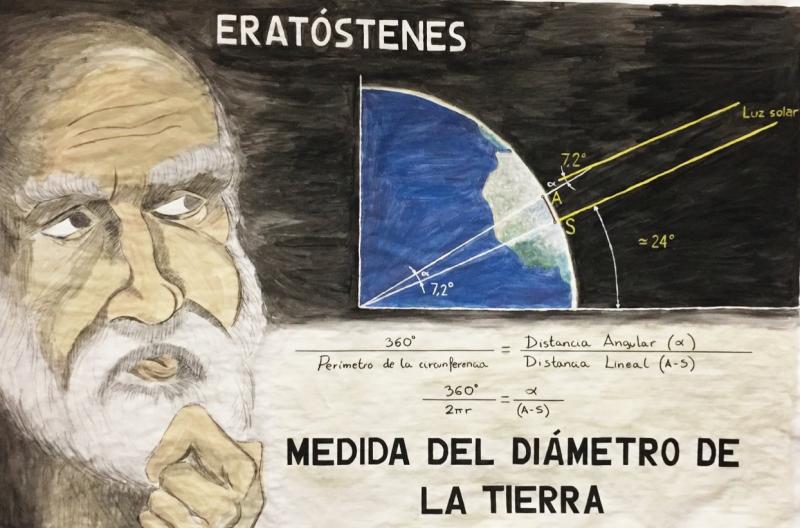
Artwork: Beatriz Huete, colegio Caude, Majadahonda
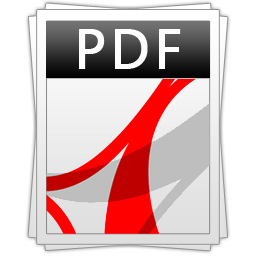 |
The CESAR team organized a special experimental activity about the Earth’s diameter classical calculation, with the Caude School of Majadahonda and the IES Manuel de Falla, Maracena, Granada. The 1-2 ESO students (12-14 years old) learnt how in 200 BC, the Greek mathematician Eratosthenes calculated the circumference of the Earth using simple geometry and a few measurements. In the activity of discovery, students used sticks, shadows, and abstraction, using Eratosthenes’s assumptions and a few pieces of information. A dual observation was achieved on 21 March by the two schools.
|


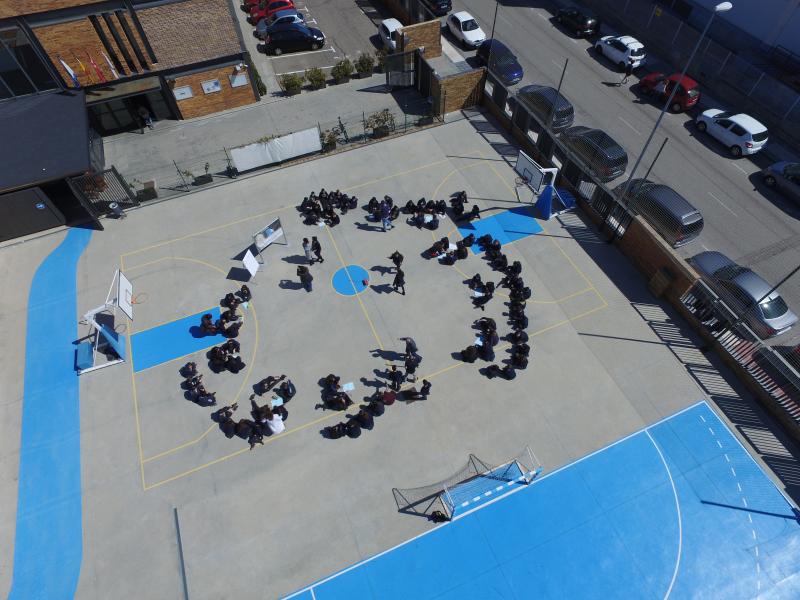
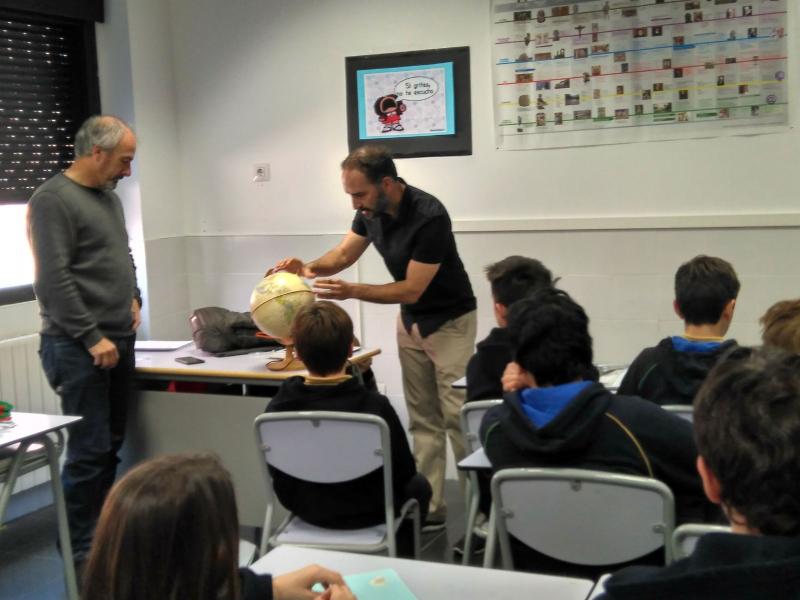
The experiment was prepared in advance. The experiment introductory information was following the EA lesson plans (online, web, http://eratosthenes.ea.gr/content/lesson-plans) with CESAR calculation formulae and procedures. Locations geometry and local noon time for the date of experiment were obtained from the NOAA webpage.
|
|
Latitude |
Longitude |
Local noon (21Mar2018) |
|
Caude |
40°27'33.46" N |
3°52'31.28" W |
13:22:39 |
|
Granada |
37°10'36.62"N |
3°35'54.30"W |
13:21:33 |
The ground distances between schools and to equator (sun was zenithal at that date) were obtained via Google Earth
•Distance Caude – Equator 4479km
•Distance Granada – Equator 4116km
•Distance Caude – Granada 365km
A Videocon between the schools (Google hangout) was organized, but one school had technical issues, so the observations were made offline. The material was arranged by the schools: the gnomon, chalk/pen, paper for measurements, bubble balance, clock (mobile phone), rope, angle measurement device. The CESAR team also brought to Caude School a set of the measurement devices, and an Earth ball with toothpicks for shadow illustration. A drone was flown at CAUDE to capture the event.
The CESAR experts gave an introduction to the experiment in the class, and followed the measurements with the kids, while explaining the experiment, geometry, how to measure etc…Some wrap-up words and preliminary results were drawn after the activity.
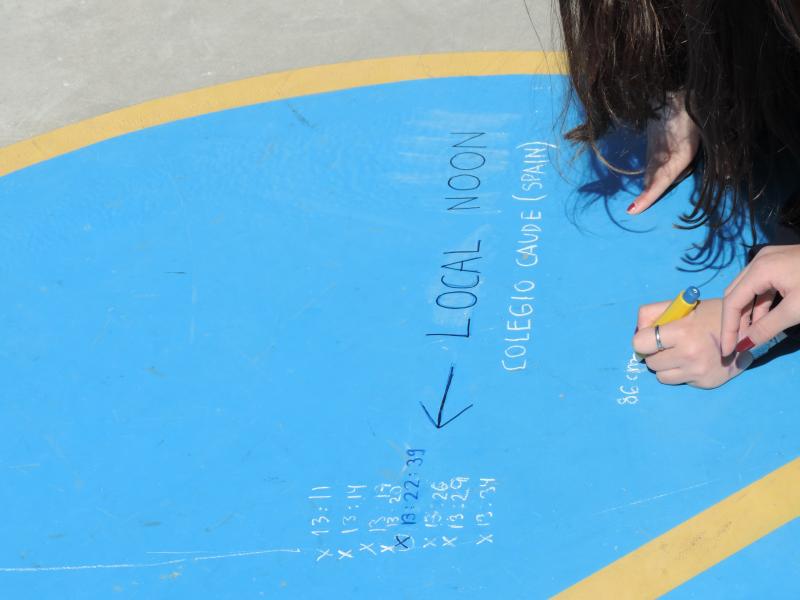
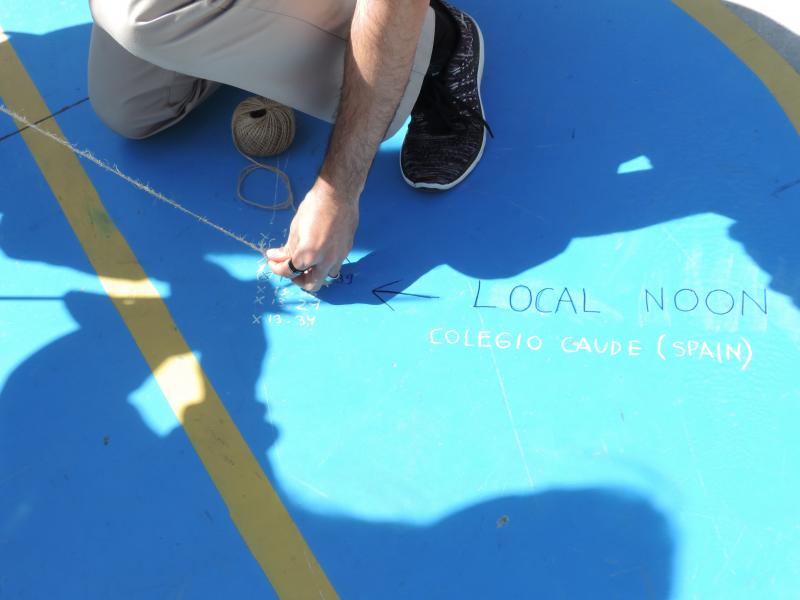
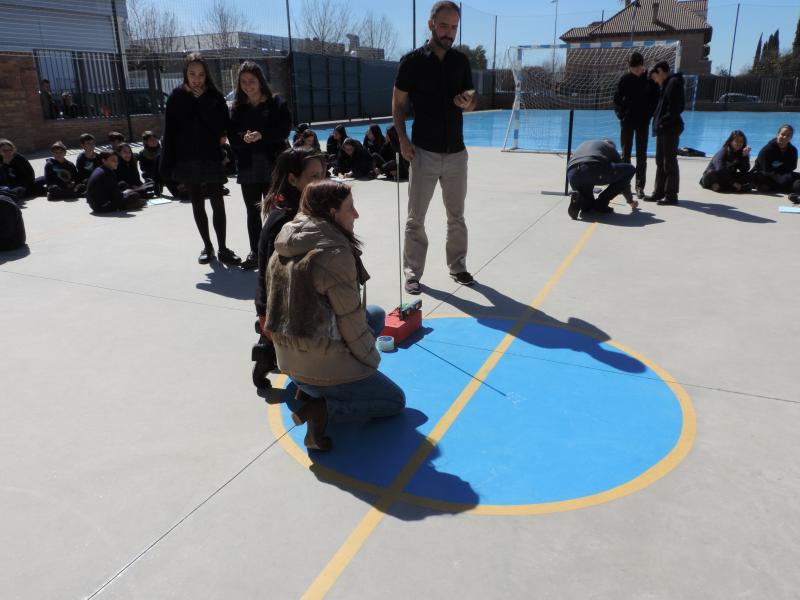
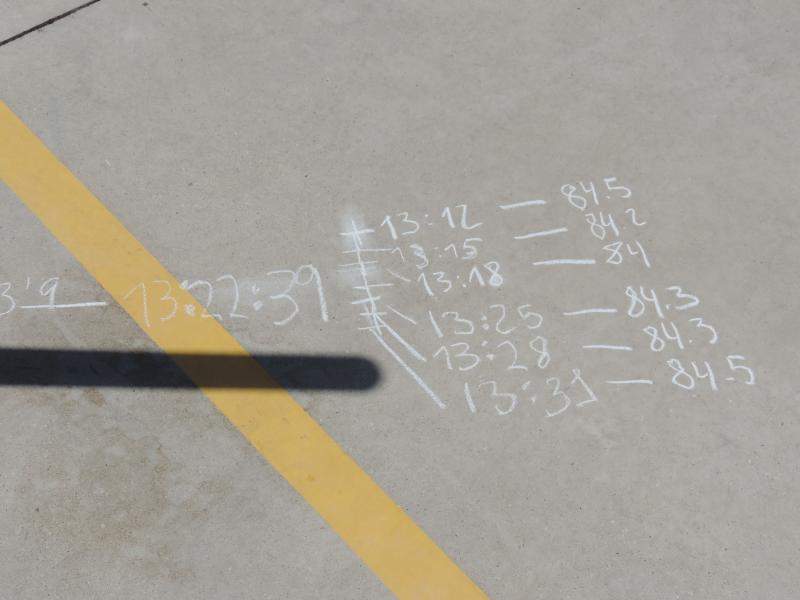
Both schools prepared with the students the results, and provided the results to CESAR:
-
Measurement Group 1 Caude, Majadahonda --- Shadow length = 86 cm (theoretical 85.25cm)
-
Measurement Group 2 Caude, Majadahonda --- Shadow length = 83.9 cm (theoretical 85.25cm)
-
Measurement 1 Granada --- Shadow length = 76.5 cm (theoretical 76.57cm)
The calculated diameter is therefore (for both values in Caude):
-
5883 km (488km off, 7.6% ERROR wrt 6371km mean radius)
-
7324 km (953km off, 14.9% ERROR wrt 6371km mean radius)
The errors are explained by measurements errors, pole shadow width, and the very short Madrid-Granada distance. The error is nonetheless <1% if the individual measurements are computed against the reference equator place, where the distance error is much less critical. All the RESULTS were brainstormed at the school, and summarized in this presentation:
